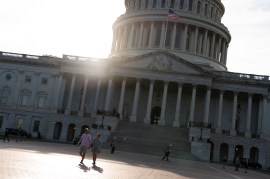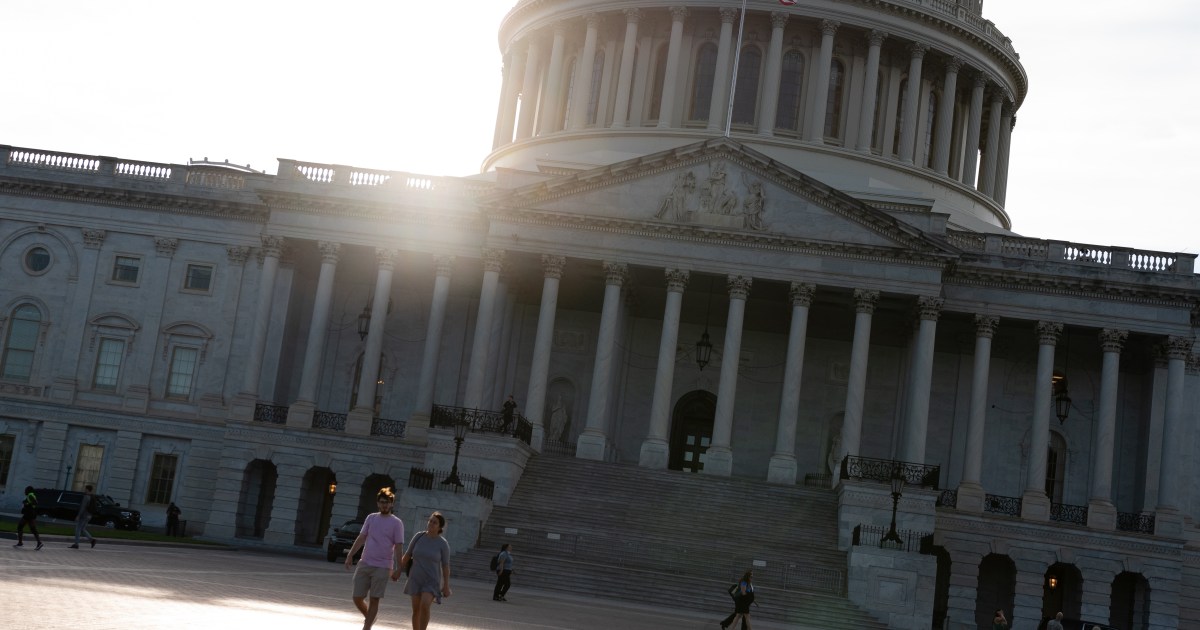
Imagine a climate policy scenario in which the United States in less than two years adopted comprehensive legislation with broad bipartisan support, produced a 69-to-27 Senate super-majority to formally enter a binding global regime, and prepared to lead international efforts to assure full implementation. Metaphysical impossibility? It just happened.
This does not refer to the new Inflation Reduction Act addressing carbon and methane emissions. That law passed on a strictly-partisan basis and is not linked to an international treaty. Instead, this reflects Wednesday’s Senate vote supporting the Kigali Amendment to the Montreal Protocol on ozone-depleting substances. Kigali is designed to achieve rapid phase-down of hydrofluorocarbons (HFCs), a short-lived but highly-intensive climate pollutant used widely in air conditioning and refrigeration systems as well as many aerosols and foams. American ratification cements a stunning shift from global laggard to leader in transitioning toward more climate-friendly coolants.
The U.S. now joins 137 other nations (including China and India) and the European Union in pursuing deep reductions in production and use of these substances by the mid-2030s, far beyond policies established for methane or carbon. Global HFC emissions have been growing eight percent annually; they are poised to soar in a world expected to expand from 3.6 billion cooling appliances in 2020 to 9.5 billion by 2050 without a major transition to next-generation coolants. A fully implemented Kigali is expected to reduce global temperatures by 0.5 degrees Celsius (0.9 Fahrenheit) by century’s end.
Kigali builds on the formidable Montreal framework established in 1987. It represents a major expansion of its climate mitigation capacity rather than incremental tinkering with a landmark program that has already delivered far-reaching environmental, climate, and public health benefits.[1] The ratification pathway opened in December 2020 through American Innovation and Manufacturing (AIM) Act adoption, featuring broad bipartisan support at a moment when the nation appeared to be coming unglued after the November election. In the Senate, Louisiana Republican John Kennedy and Delaware Democrat Thomas Carper served as key policy entrepreneurs throughout both legislative and treaty stages.
American firms and trade associations recognized major scientific advances in developing HFC alternatives and were mindful that Kigali trade restrictions on non-participants would constrain their ability to engage on a global scale. Proliferation of individual state policies in the late 2010s indicated a possibility of fragmented regional standards. Consequently, many industry leaders became active AIM and Kigali proponents. A large coalition of private groups, including the Chamber of Commerce, the National Association of Manufacturers, and the Air-Conditioning, Heating & Refrigeration Institute issued a pointed, nine-sentence letter to all Senators advising “expeditious ratification” of Kigali to enable America to “join the global community and reap the full economic and environmental benefits” associated with rapid HFC phase-down.
HFCs are now governed by a firm international treaty, unlike the soft terms of engagement for carbon under the Paris Agreement or the spongy Global Methane Pledge. The Environmental Protection Agency (EPA) has been rapidly developing a new program to meet ambitious HFC reduction targets specified in statute. This includes initiating efforts to combat smuggling, reflected in early enforcement actions against illegal imports.
These steps do not, however, assure seamless implementation or unbridled progress. The industry consensus has begun to fray as EPA considers important program details. Can the agency ban single-use HFC canisters, which facilitate smuggling and often release residual chemicals when disposed? Can it address blends of different substances, or must it treat each one separately? How does it set release baselines and allocate allowances for remaining HFC use? Can it deploy a QR code tracking and reporting system?
These kinds of questions now face growing industry splinters, including litigation threats from firms displeased with emerging EPA policies. Some early challenges embrace recent Supreme Court decisions curbing agency ability to interpret legislative intent. It is highly unlikely that future Congresses will write hundreds of pages of supplemental text scripting every conceivable administrative step in exacting detail, suggesting potential court haggles and implementation stumbling blocks despite fresh legislation.
The U.S. has no time to waste in standing up the AIM process and playing catch-up with major trade partners such as Canada and the European Union that launched Kigali preparation years ago. It is also important to consider how to best mitigate climate impacts when multiple contaminants are involved, ranging from timing decisions on heat pump purchases to broader cooling sector policies spanning developed and emerging economies.
Nonetheless, these recent steps reflect a stunning climate policy transition. Despite their substantial role in global warming, HFCs, methane, and other contaminants with near-term climate intensity have often been overshadowed in policy deliberations given the abiding climate policy focus on long-lived carbon dioxide. Following Senate action on Kigali, domestic and global efforts to address one major short-lived climate pollutant are on exceptionally solid political and policy footing, representing a model for other climate contaminants.
Footnote
[1] Paul J. Young, et al. “The Montreal Protocol protects the terrestrial carbon sink,” Nature 596 (2021): 384-388.


